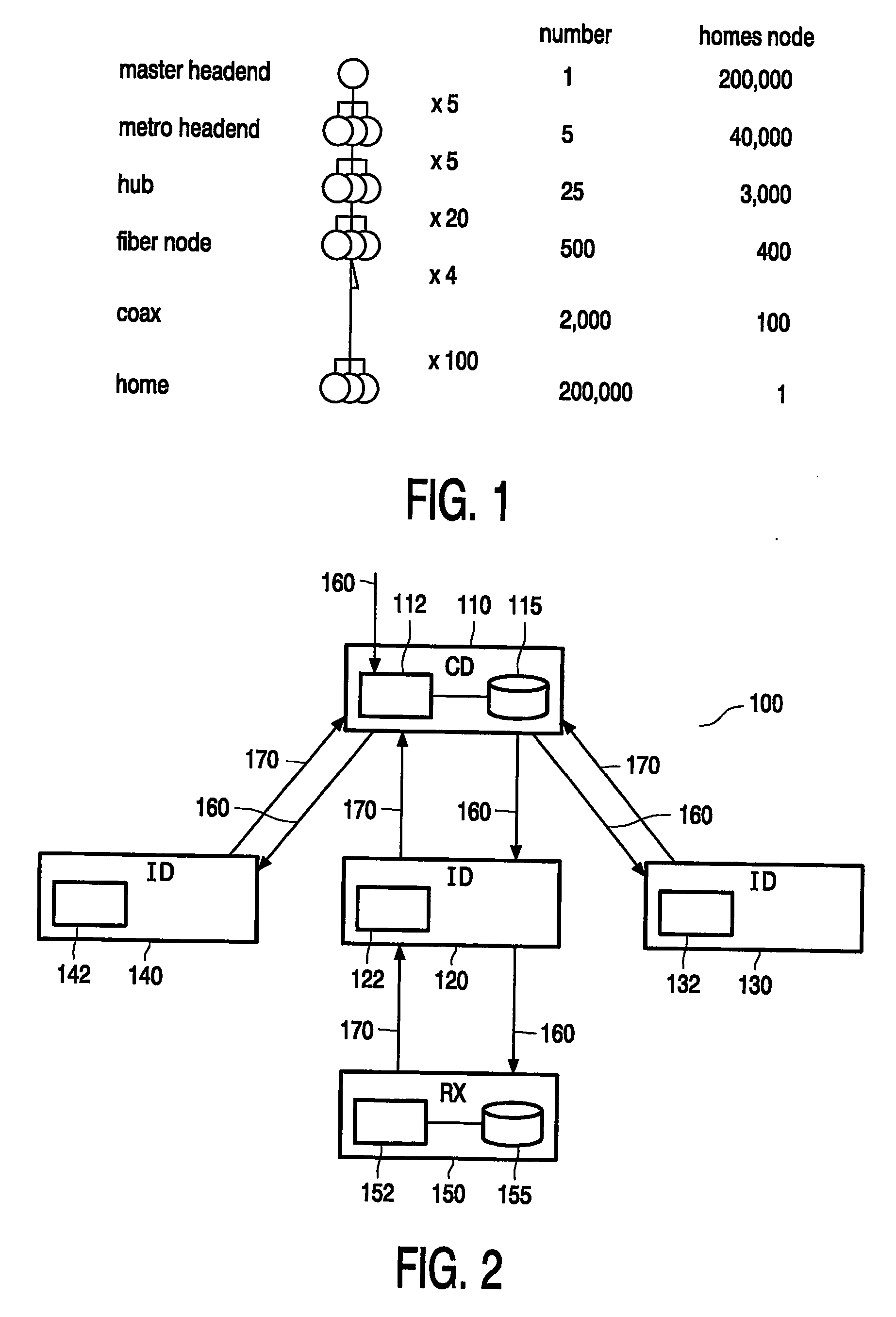Channel tapping in a near-video-on-demand system
a technology of video-on-demand and channel tapping, which is applied in the field of channel tapping, can solve the problems of waste of broadcast receiver reception capacity, and achieve the effect of improving response tim
- Summary
- Abstract
- Description
- Claims
- Application Information
AI Technical Summary
Benefits of technology
Problems solved by technology
Method used
Image
Examples
Embodiment Construction
[0018]FIG. 2 shows a block diagram of the broadcast system in which the near-video-on-demand (NVoD) protocol according to the invention may be employed. The exemplary broadcast system 100 includes a hierarchical network of data distributors. The top of the network is formed by a central distributor 110. The system includes at least one layer of intermediate distributors. To simply the figure, only one intermediate layer for downstream broadcasting is shown with three intermediate distributors 120, 130 and 140, each covering a disjoint geographical area. FIG. 1 shows a typical hierarchical network for a town of 200,000 connected homes, with four intermediate downstream layers (metro headend, hub, fiber node, coaxial headend). FIG. 2 also indicates the downstream path 160 that starts at the central distributor 110, runs through the intermediate distributors 120, 130 and 140 and ends at the plurality of broadcast receivers of the system. Conventionally the distributors split the broadc...
PUM
 Login to View More
Login to View More Abstract
Description
Claims
Application Information
 Login to View More
Login to View More - R&D
- Intellectual Property
- Life Sciences
- Materials
- Tech Scout
- Unparalleled Data Quality
- Higher Quality Content
- 60% Fewer Hallucinations
Browse by: Latest US Patents, China's latest patents, Technical Efficacy Thesaurus, Application Domain, Technology Topic, Popular Technical Reports.
© 2025 PatSnap. All rights reserved.Legal|Privacy policy|Modern Slavery Act Transparency Statement|Sitemap|About US| Contact US: help@patsnap.com



